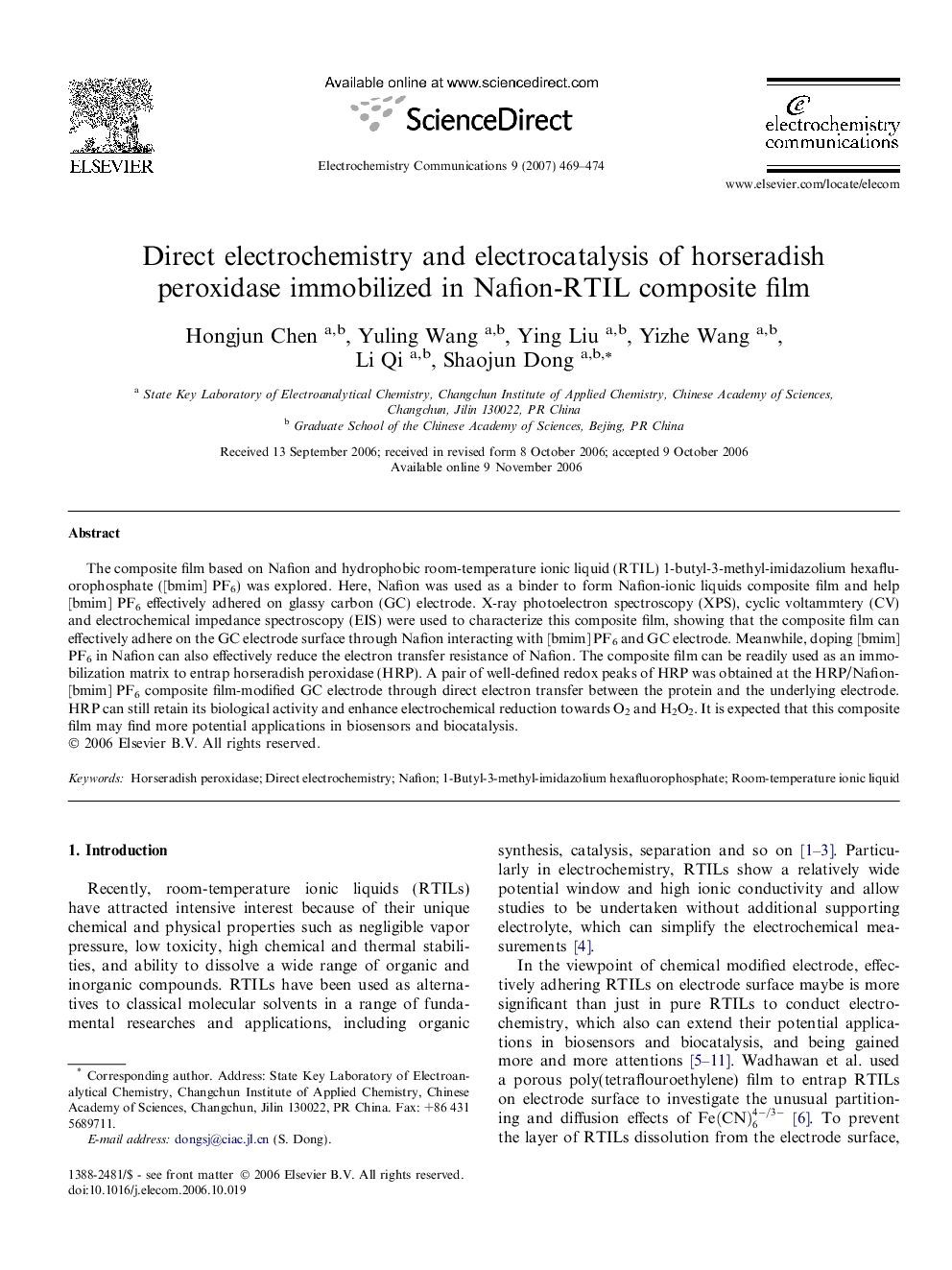| Article ID | Journal | Published Year | Pages | File Type |
|---|---|---|---|---|
| 182648 | Electrochemistry Communications | 2007 | 6 Pages |
The composite film based on Nafion and hydrophobic room-temperature ionic liquid (RTIL) 1-butyl-3-methyl-imidazolium hexafluorophosphate ([bmim] PF6) was explored. Here, Nafion was used as a binder to form Nafion-ionic liquids composite film and help [bmim] PF6 effectively adhered on glassy carbon (GC) electrode. X-ray photoelectron spectroscopy (XPS), cyclic voltammtery (CV) and electrochemical impedance spectroscopy (EIS) were used to characterize this composite film, showing that the composite film can effectively adhere on the GC electrode surface through Nafion interacting with [bmim] PF6 and GC electrode. Meanwhile, doping [bmim] PF6 in Nafion can also effectively reduce the electron transfer resistance of Nafion. The composite film can be readily used as an immobilization matrix to entrap horseradish peroxidase (HRP). A pair of well-defined redox peaks of HRP was obtained at the HRP/Nafion-[bmim] PF6 composite film-modified GC electrode through direct electron transfer between the protein and the underlying electrode. HRP can still retain its biological activity and enhance electrochemical reduction towards O2 and H2O2. It is expected that this composite film may find more potential applications in biosensors and biocatalysis.
